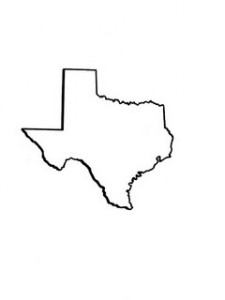The state of Texas leads the nation in the percentage of residents lacking health insurance. In 2012, nearly a quarter of the state’s population went without health coverage, some 6.4 million people. Texas alone is home to 13% of all uninsured Americans, with poor and low-income people the most affected. More than ninety percent of well-off Texans have health insurance. But the ranks of the uninsured include more than two out of five impoverished Texans—as well as more than a quarter of individuals earning modest incomes in 2014 between $11,670 and $46,680 (or between $19,970 and $79,880 for a family of three).
If the Affordable Care Act were fully implemented in Texas, most residents earning less than $16,105 in 2014 could potentially gain coverage through an expanded Medicaid program. For the first year, the federal government would pay the full cost of this expansion; from 2016 through 2019 the federal share would decline slightly, and remain at 90% thereafter. It’s a great deal for the state, but Governor Rick Perry and Republican majorities in the legislature refuse to accept the new federal Medicaid money. As a result, millions of the neediest Texans cannot gain health insurance, hospitals are losing money, and community health centers face new burdens.
Health Struggles for Low-Income Texans
Research has established that health insurance helps people to get access to regular care. Those without coverage often forgo or delay checkups and tests and thus face a higher risk of serious health problems and premature death. Not surprisingly, huge gaps in insurance coverage in Texas go hand in hand with low ratings for the state on a series of measures of health problems that could be addressed with better access to care.
| Indicator from the Kaiser Family Foundation’s
State Health Facts |
Texas | U.S. | Rank among 50 states & DC |
| Teen Birth Rate per 1,000 age 15-19 (2010) | 52.2 | 34.2 | 4th highest |
| Percent of Children Age 10-17 that are Overweight/Obese (2007) | 36.6% | 31.3% | 5th highest |
| Percent of Children Age 0-17 with No Medical Home (2007) | 49.7% | 42.5% | 6th highest |
| Women Age 18+ who Had a Pap Smear in the Past 3 Years (2012) | 74.6% | 77.6% | 8th lowest |
| Cervical Cancer Incidence Rate per 100,000 Women (2009) | 9.4 | 7.9 | 8th highest |
| Percentage of Adults Reporting Not Seeing a Doctor in the Past 12 Months Because of Cost (2012) | 20.9% | 16.5% | 3rd highest |
- Between 1,800 and 3,000 fewer deaths among Texas residents.
- About 110,000 more Texans suffering from diabetes receiving appropriate medications.
- About 41,000 more women getting mammograms; and 110,000 getting Pap smear tests for early cancer detection.
- Some 184,000 fewer Texans diagnosed with depression.
- Roughly 63,000 fewer Texans who have to deal with catastrophic medical bills.
Extra Strains on Hospitals and Community Health Centers

Refusing new Medicaid money puts a strain on hospitals that serve many uninsured patients; according to the Robert Wood Johnson Foundation, Texas hospitals are forgoing $34.3 billion in revenues between 2013 and 2022. Hospitals are not the only institutions affected; the Medicaid refusal also hurts 71 community health centers located in urban and rural communities where basic medical care might otherwise not be available. By law, community health centers provide comprehensive primary health care to all patients and bill uninsured patients on a sliding scale depending on their incomes. In 2012, these centers served one of every ten low-income Texas residents, approximately 1.1 million people, virtually all with low or poverty-level incomes.
Because half of the patients served by Texas community health centers lack insurance coverage—compared to 36% of center patients nationwide in 2012—both patients and the centers themselves would have benefited greatly if Texas had accepted the Medicaid expansion.
- Of the approximately half a million uninsured community health center patients in Texas, one third, or about 145,000, could have gained insurance coverage through expanded Medicaid.
- Expansion would bring about $83 million in new revenues to community centers—enough to serve thousands of new patients and help to alleviate the shortage of primary care providers.
Beyond refusing new Medicaid money, the state of Texas is also actively obstructing the provision of subsidies to residents with modest incomes to help them purchase private health insurance through the federal online marketplace. Staff at community health centers would like to help eligible people sign up, but Texas laws restrict and hassle such helpers. In a recent survey, more than 30 Texas centers reported that patient confusion regarding their eligibility for insurance programs was an expected barrier to their outreach and enrollment activities.
In short, Texas authorities are blockading expanded health insurance coverage—and access to good health care—for millions of their most economically vulnerable residents. This situation may change, but only if and when all Texas citizens start asking why federal funds for vitally necessary health care are being turned away in the midst of so much poverty and ill health.
—
Read more in Peter Shin, Jessica Sharac, Julia Zur, Carmen Alvarez, and Sara Rosenbaum, “Assessing the Potential Impact of State Policies on Community Heath Centers’ Outreach and Enrollment Activities,” George Washington University, Geiger Gibson/RCHN Community Health Foundation Research Brief 35, January 2014.

 Research to Improve Policy: The Scholars Strategy Network seeks to improve public policy and strengthen democracy by organizing scholars working in America's colleges and universities. SSN's founding director is Theda Skocpol, Victor S. Thomas Professor of Government and Sociology at Harvard University.
Research to Improve Policy: The Scholars Strategy Network seeks to improve public policy and strengthen democracy by organizing scholars working in America's colleges and universities. SSN's founding director is Theda Skocpol, Victor S. Thomas Professor of Government and Sociology at Harvard University.